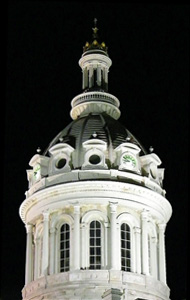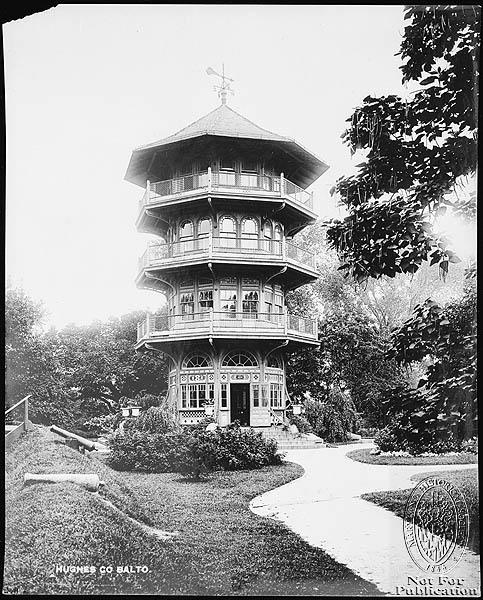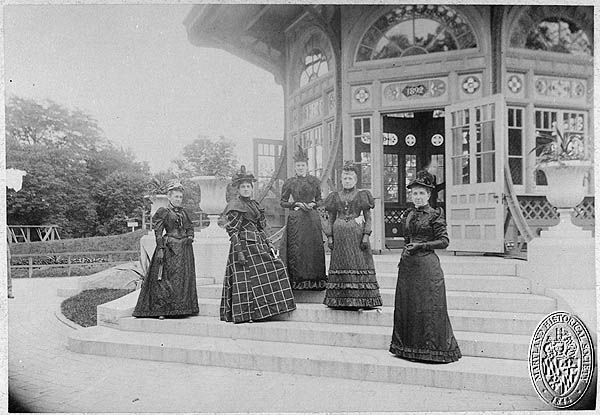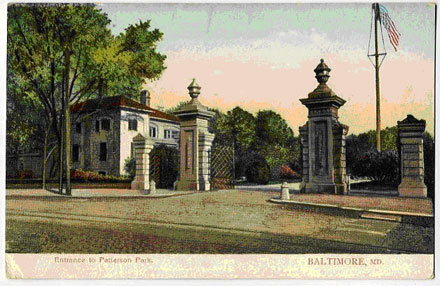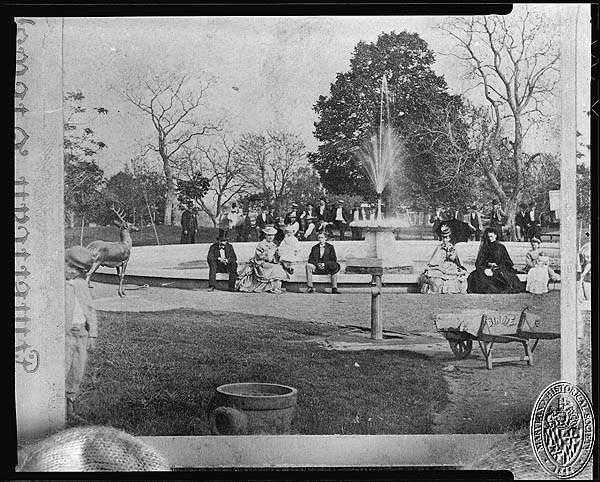Works in Baltimore |
|
|---|---|
|
|
| Name: | Patterson Park |
| Address: | bordered by 2300 - 3100 blocks of Baltimore Street on the North; 2300-3100 blocks of Eastern Avenue on the south; 00-400 blocks of South Linwood Avenue on the east; and the 00-400 blocks of South Patterson Park Avenue on the west |
| Standing? Some | Year: 1860s |
Patterson Park is one of the oldest parks in Baltimore. Many generations have played and worked in the park, every stage of American history has left its indelible mark. The first to live on what is now Patterson Park was Quinton Parker in 1669. Then it was possible to navigate a small boat up Harris Creek from the Patapsco River right into Patterson Park. In 1708 the land was conveyed to Nicholas Rogers. In 1792 William Patterson purchased at auction, for $8,500, the 200 acre Harris Creek Rogers estate that sat on the edge of what was called Baltimore Town. On Hampstead Hill, the ridge where the Pagoda now stands, Baltimoreans rallied on September 12, 1814 to protect the city from the threat of a British invasion. Urban myth suggests that from this vantage point the glow from the fire at the Capitol and the White House could be seen as the opposition marched through the nation's capital. By water the British entered the Patapsco River and bombarded Fort McHenry. By land they amassed forces at North Point. As they marched on to Baltimore they were able to look up to Hampstead Hill and see Rodger's Bastion—100 cannons and 20,000 troops. The British returned to their ships and sailed away. With its historic significance and fine view of the harbor, this area became a popular place for citizens to promenade and picnic. In 1827 in an effort to re-create the beauty of the public walks that he had seen in Europe, Patterson offered the mayor of Baltimore six acres of land on the hill. The city eagerly accepted. In 1850, the city purchased another 29 acres from Patterson's heirs. On the evening of July 13, 1853, twenty thousand citizens were there when the park was formally introduced. Eventually, the city purchased an additional 30 acres of land and plans began to create park structures fashioned after those in Central Park. However, by 1861 when the Civil War threatened to dissolve the Union, all parks and open spaces were earmarked for troop occupation. Camp Washburn was established. Later, a hospital, Camp Patterson Park, was set up. Once again, Hampstead Hill was a strategic military lookout and fortification. When the hospital was dismantled in 1864, the park was in deplorable condition. Frederick was hired as park architect in 1863 and designed many structural elements within the park doing much to enhance the park's beauty by introducing a Victorian character which remains to this day. Patterson Park is blessed not only with rolling picturesque landscapes, but also with a rich and vital history. Frederick designed the Superintendent¹s House, or White House, in 1866; a music pavilion in 1868; and the Lombard Street Gate, in 1869. Grading work done for these improvements formed the Boat Lake, one of the park¹s most beloved features. Frederick's boat house, built in 1864, no longer stands. There is much debate as to the Pagoda's architect. Some sources claim Charles H. Latrobe designed it and others insist it was Frederick. The Pagoda was restored in 2002. After many years of abandonment and disrepair, the marble fountain, designed by Frederick in 1865, near the Lombard Street entrance, was restored in 2002. The fountain was the first architectural element in Patterson Park. At the turn of the century the fountain area was a gathering spot where people would congregate to talk, play, or simply watch the fountain spray its watery canopy five feet into the air. The Maintenance Yard, formerly called the Stables, is located near the Community Gardens. It was originally built in 1870 and was rebuilt after a fire in 1881. This building was designed by Frederick for livestock and storing tools, carriages, and wagons. The Patterson Park White House, designed by Frederick in 1866, served as home and office for the park superintendent and his family. Over the years this building was also called the Gatekeeper's House and The Superintendent's House. The offices of the Friends of Patterson Park are located in this building. Meeting space is available for use by community organizations. |
|
